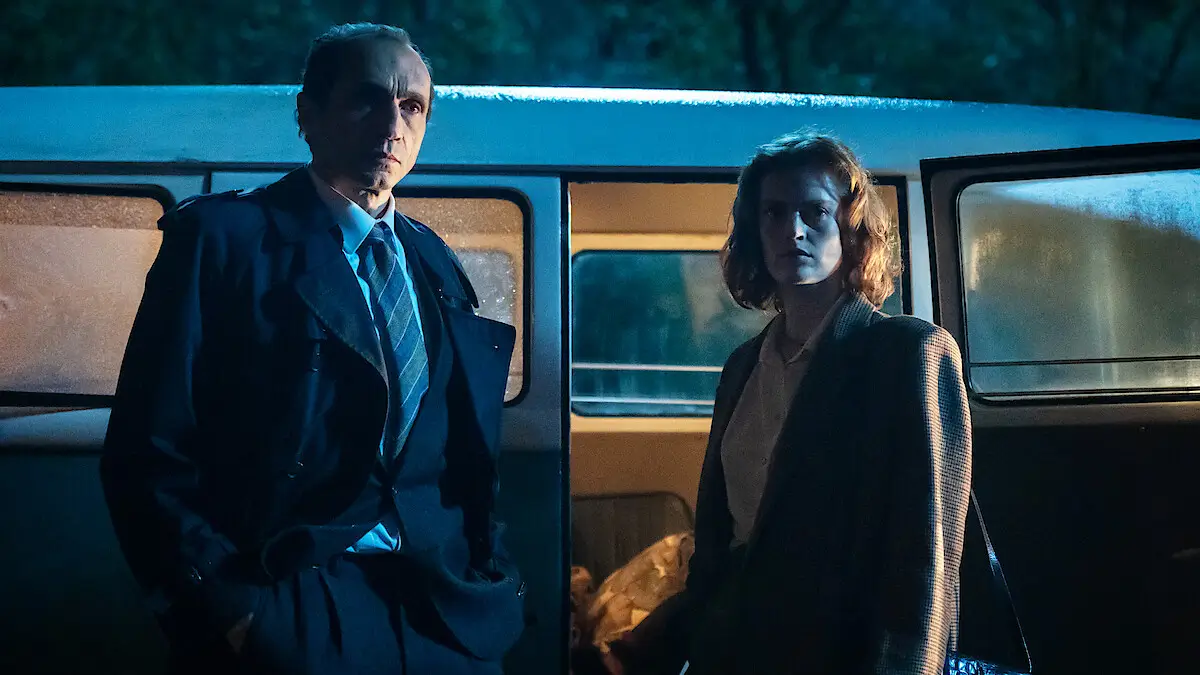A House of Dynamite Ending Explained: I just finished watching A House of Dynamite, and honestly, I’m still trying to process what I just saw. Two hours of tension, dread, and quiet chaos, all leading up to one of the most abrupt endings I’ve seen in a political thriller in years. Let’s break down what really happened, what that final scene meant, and why this movie hit harder than most.
The Setup: 20 Minutes to the End of the World
The whole film takes place during a 20-minute countdown before a nuclear missile hits the United States, specifically, Chicago. The setup sounds like your usual high-stakes thriller, but here’s the thing: A House of Dynamite isn’t about action. It’s about perspective.
Instead of focusing on explosions or heroic rescues, the movie cuts between several groups of people, political leaders, scientists, military officials, and everyday citizens, all reacting in real time to something they can’t control.
What really pulled me in was how quiet the panic felt. Nobody was screaming. Nobody was saving the day. It was people in suits, on video calls, staring at screens, realizing that the world as they knew it might end in minutes.
The Final Perspective: The President’s Impossible Choice
The last point of view we see is the President of the United States. The missile is seconds away from hitting Chicago, and everyone on the call, generals, advisors, and intelligence chiefs, looks completely lost. Nobody knows who launched the attack. Nobody can trace it. The satellites fail. Every “solution” leads to more death.
At that moment, the President has two options:
- Let the missile hit and lose millions of lives.
- Retaliate blindly, also killing millions, maybe even more, and risk starting World War III.
No matter what he chooses, he loses.
And right before he decides… the screen cuts to black.

The Cut to Black: What It Really Means
That cut wasn’t a cheap trick. It’s the point of the entire movie.
When everything goes dark, it’s basically the film flipping the camera toward us. We’re the ones who have to answer the question: what would you do? Would you press the button? Or would you let it hit?
I think the President did retaliate. The folder on his desk was open. His hand was shaking. He had that hollow look, the kind of look of someone who’s already made a decision they can’t take back. But the beauty of that ending is that we’ll never know for sure.
The Meaning Behind the Title: A House of Dynamite
The title is one of those things that feels obvious only after you’ve watched the movie.
We’re all living in this global “house”, a fragile system built on nuclear weapons, alliances, and deterrents. Every wall in that house is lined with explosives, and we’re just… living in it. Going to work. Making coffee. Watching movies. Pretending it’s fine.
That’s what the film gets so right. The idea that one mistake, one misread signal, one bad call, and the entire planet could blow itself apart before most people even realize what’s happening.
The scene with Olivia Walker’s son and his toy meteor wasn’t random either. It was symbolic. Humanity was wiped out once by a meteor, and now, we’ve built our own.
Reed Baker’s Ending: Why He Walked Off the Roof
This scene gutted me. After Reed finds out that his daughter is in Chicago and likely won’t survive, you can see him start to break. When he learns that she’s not alone, that she’s walking with someone she cares about, there’s this brief flicker of peace.
And then he steps off the roof.
It wasn’t about giving up. It was about control. Everything else in the film is about powerlessness, not being able to stop what’s coming. That moment was Reed’s one act of choice. He couldn’t save his daughter, but he could choose how his story ended.
Why the Gettysburg Reenactment Matters
A strange thing to include, right? A Civil War reenactment during a nuclear crisis. But it fits. The Battle of Gettysburg was the bloodiest conflict in American history, 50,000 lives lost. The film uses it as a mirror: back then, war was men fighting men. Now, it’s buttons and codes and screens. One missile, and you’re looking at millions gone in seconds.
It’s haunting to think about how far “progress” has brought us, and how much closer it’s pushed us to extinction.
Also Read: House of Dynamite Review: The Nuclear Thriller That Feels Too Real
What Made the A House of Dynamite Work
Let’s talk about the filmmaking itself, because it deserves credit.
The whole thing is shot like a mockumentary, shaky cameras, quick zooms, moments where it feels like someone’s actually standing there holding the lens. It reminded me of Succession in the best way: raw, unfiltered, and tense.
The music adds another layer. Most scenes have this low hum underneath, nothing overbearing, just enough to make you feel uneasy. When the final moments hit, the score swells into this deep, pulsing note that feels like dread itself. It reminded me of All Quiet on the Western Front, that same hollow sound right before destruction.
And the acting? Perfectly restrained.
Jared Harris broke me when he said, “My daughter’s in Chicago.” No theatrics, no shouting, just quiet panic. Idris Elba, too, plays that balance between authority and helplessness beautifully.
My Takeaway on A House of Dynamite
When the screen went black, I just sat there. No music. No explosion. No credits right away. Just silence. And that silence said everything.
A House of Dynamite isn’t about a nuke hitting America. It’s about how fragile everything is. How people in power, the ones we assume always have answers, often don’t. And how we, the ordinary people, would never even know what’s happening until it’s too late.
The truth is, we all live in a house of dynamite. We just hope no one lights the match.